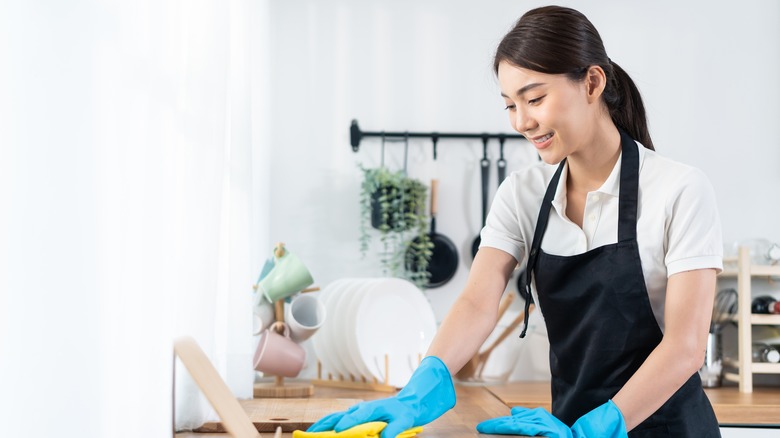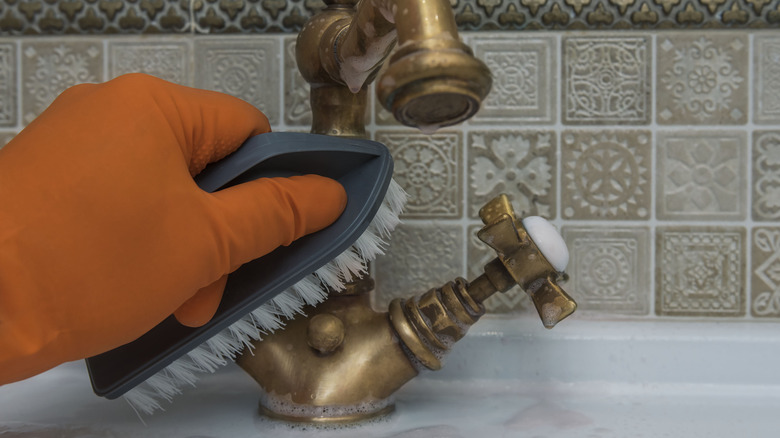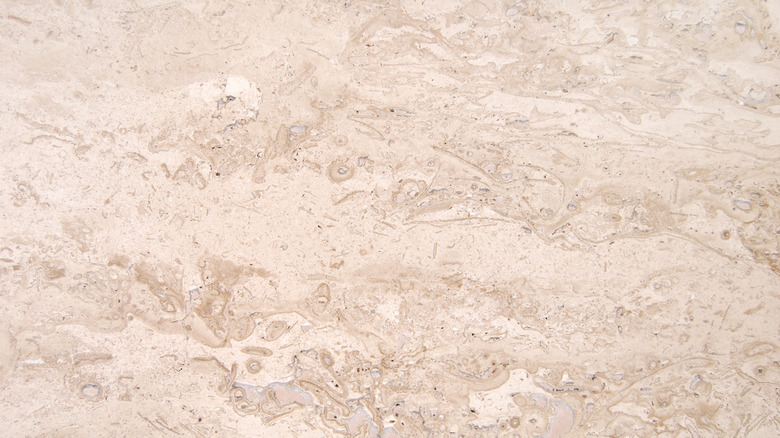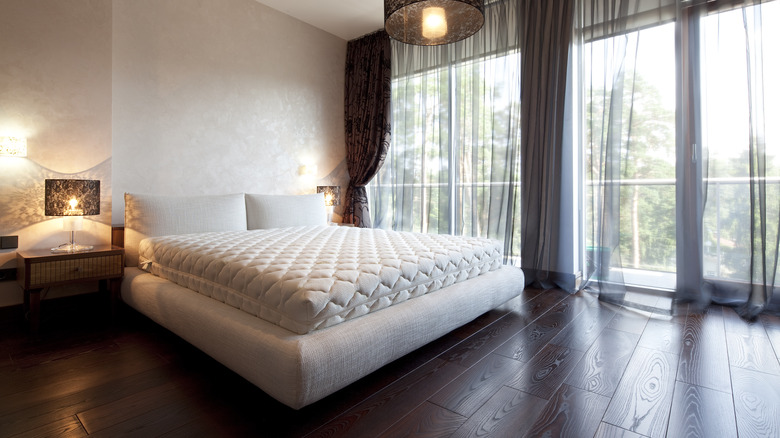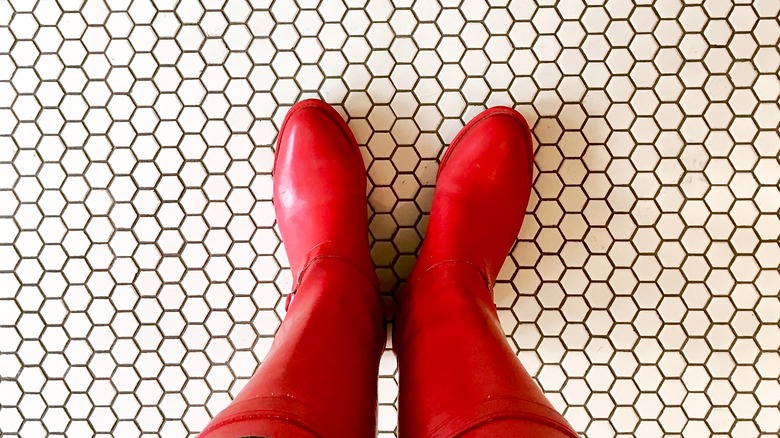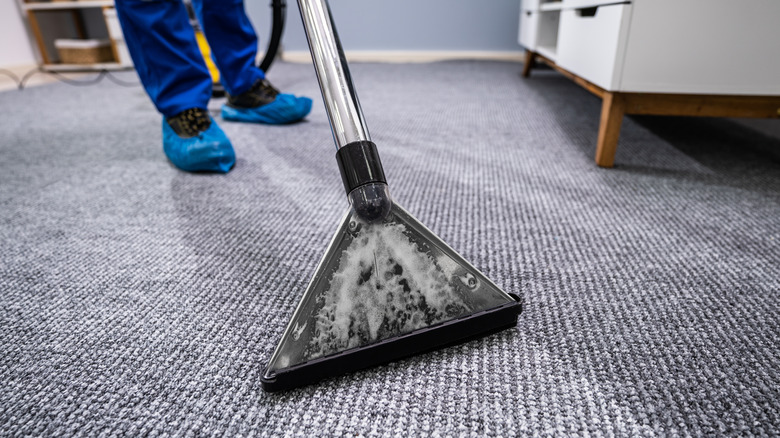Keep Housekeeping Simple By Avoiding These 5 High-Maintenance Materials
Tidying your home and keeping it in a state of organized cleanliness can feel like a constant and ongoing battle, especially if you have kids. Useful items being in their rightful place helps you find them when you need them, and according to Very Well Mind, clutter and mess can be a source of stress and anxiety in the home that make it harder to focus. Mess can even have potentially negative impacts on your long-term physical and mental health.
For some people, cleaning and organizing their home is akin to meditation, it relaxes them and gives them a sense of control over their space. In order to get this sense of relaxation and control though, you need to feel like you're making progress and having an impact. High maintenance materials are like chore black holes, soaking up time, money, and effort for very little reward.
Low-maintenance materials are usually sleek, smooth surfaces that are difficult for dust or grime to accumulate on, and require little in terms of specialist equipment or cleaning materials to take care of, explains Sixides. Here are some of the best materials in interior design that can make the difference between a simple clean-up and a housekeeping nightmare.
Bronze Hardware
Bronze is an alloy, mainly made of copper and tin. It's typically shiny and gold colored, but it will naturally turn darker brown or green with age, as the surface of the bronze oxidizes. This patina eventually forms a stable, protective layer, notes Furnitubes, and for many people, this darkened bronze color is their desired final effect. However, there are several issues that arise from using and cleaning bronze fixtures and fittings.
The first thing to remember is that although the patina protects the underlying metal from the elements, it is still a thin covering of material. This means it's easily damaged by abrasives such as pressure washers or cleaning products that are chemically stronger than soap and water, according to Taste of Home.
According to Ted Roberts, an art restorer, originally quoted by Martha Stewart, exposing bronze to chloride-based cleaners can "cause a damaging corrosive tarnish called bronze disease that will pit and eventually destroy the metal". The ideal way to take care of bronze is to wash with warm, soapy water and buff it with a protective layer of wax, which creates a barrier and prevents oxidization.
Travertine Tiles
Travertine is a beautiful building material that's been around since Roman times. According to Sir Grout, travertine can be found decorating iconic buildings from the Colosseum to St Peter's Basilica in the Vatican, and even the Sears Tower in Chicago! This durable and attractive stone is found naturally in Italy and Greece, but there's also significant domestic production, thanks to deposits near Yellowstone national park.
Chemically speaking, travertine stone shares a lot of properties with marble and limestone, which are also very popular for their application in the home. The major difference is structural. According to Oh So Spotless, travertine is formed near hot springs which fill it with tiny bubbles, making travertine much more porous than marble and limestone. Tiles of travertine are often cut perpendicular to the grain of the rock, which gives travertine its characteristic cloudy swirls. These pores, pits, nooks, and crannies are pretty, but they are also what can make cleaning travertine tiles a housekeeper's nightmare.
Even when it's filled, polished and chemically sealed, travertine is high maintenance and can be damaged by acid from sources as weak as fruit juice. Acid-based cleaners can ruin it, but so can bleach or alkaline products. On top of it being at risk of damage from almost everything in your kitchen or bathroom, travertine's sponge-like structure also absorbs oils and other staining liquids very quickly, according to Stone Doctor Australia.
Dark Hardwood Floors
Generally speaking, the darker and harder the wood, the more expensive and luxurious it is. Hardwoods take longer to grow than softwoods, are denser and more durable, and many of them are resistant to pests and sun damage (via Timber Blogger). However, according to Home Flooring Pros, dark wood has a bad reputation as being a high-maintenance material.
The biggest issue with dark hardwood floors is contrast. It's fantastic when you're taking pictures of your home, decorating with light and airy furnishings that really pop next to the deep, dark floorboards. However, this contrast will also draw the eye to every speck of dust, every dog hair, and every scratch that the floor accumulates over time. Nina Hendrick points out that while hardwood floors look fantastic, they need vacuuming at least once a day if you have pets — if that doesn't sound like a reasonable trade-off to you, then don't make it!
Penny Tile
Penny tiles are small round or hexagonal tiles that are roughly the size of a small coin. They have been around since the 1900s and give a classic look to kitchen backsplashes, floors, and shower rooms. The small penny tiles and surrounding lines of grouting create a non-slip surface that designers often favor in heavily used or wet areas, and they are modular enough to wrap seamlessly around awkwardly shaped objects, according to Avalon Flooring.
Penny tiles themselves are pretty easy to clean. Just like any tile, they are usually smooth, durable, and wipe-clean. Even in a bathroom with lots of traffic, the tile itself isn't the issue. The problem, as explained by Designing Idea, is all of the tiny lines of grout that hold the tiles in place. Grout is a mortar made from water, sand, and cement, and unlike tiles, it is absorbent, stains very easily, and can be quite fiddly to properly clean.
All tiled surfaces have grout, but penny tiled surfaces have much more grout relative to other tiled surfaces because the tiles are smaller and more plentiful — making penny tiles amongst the highest-maintenance tiles you can find.
Carpets
Carpets are comfortable to walk on, they can be gorgeously ornate or beautifully simple, they absorb noise, and sometimes nothing else can pull a room together in the same way as the right carpet can. However, there's no question that fibrous floor matting traps dirt, odors, and stains much more than smooth surfaces. Therefore carpets require more maintenance and cleaning just to keep them in an acceptable state, per Fresh Design Blog.
Carpets need to be vacuumed at least once a week (more often if you have pets,) and deep cleaned by a professional at least once a year, according to Today. This is because dirt and grime aren't just unhygienic and potential sources of stains and smells, but over time will act like small particles of sandpaper lodged within the fabric of the carpet. As the carpet gets walked on, the tiny pieces of dirt rub against the fibers and slowly erode the carpet itself, making it less comfortable to walk on, and reducing the lifetime of the carpet drastically.
Carpeted flooring is high maintenance, but also low-reward, financially speaking. According to Forbes, heavily carpeted homes are at a significant disadvantage in the housing market. They are too high maintenance, exacerbate allergies, and offer a lot less flexibility in terms of design to any prospective buyers. Much better to opt for cost-effective, low-maintenance options, and add an area rug if needed.
